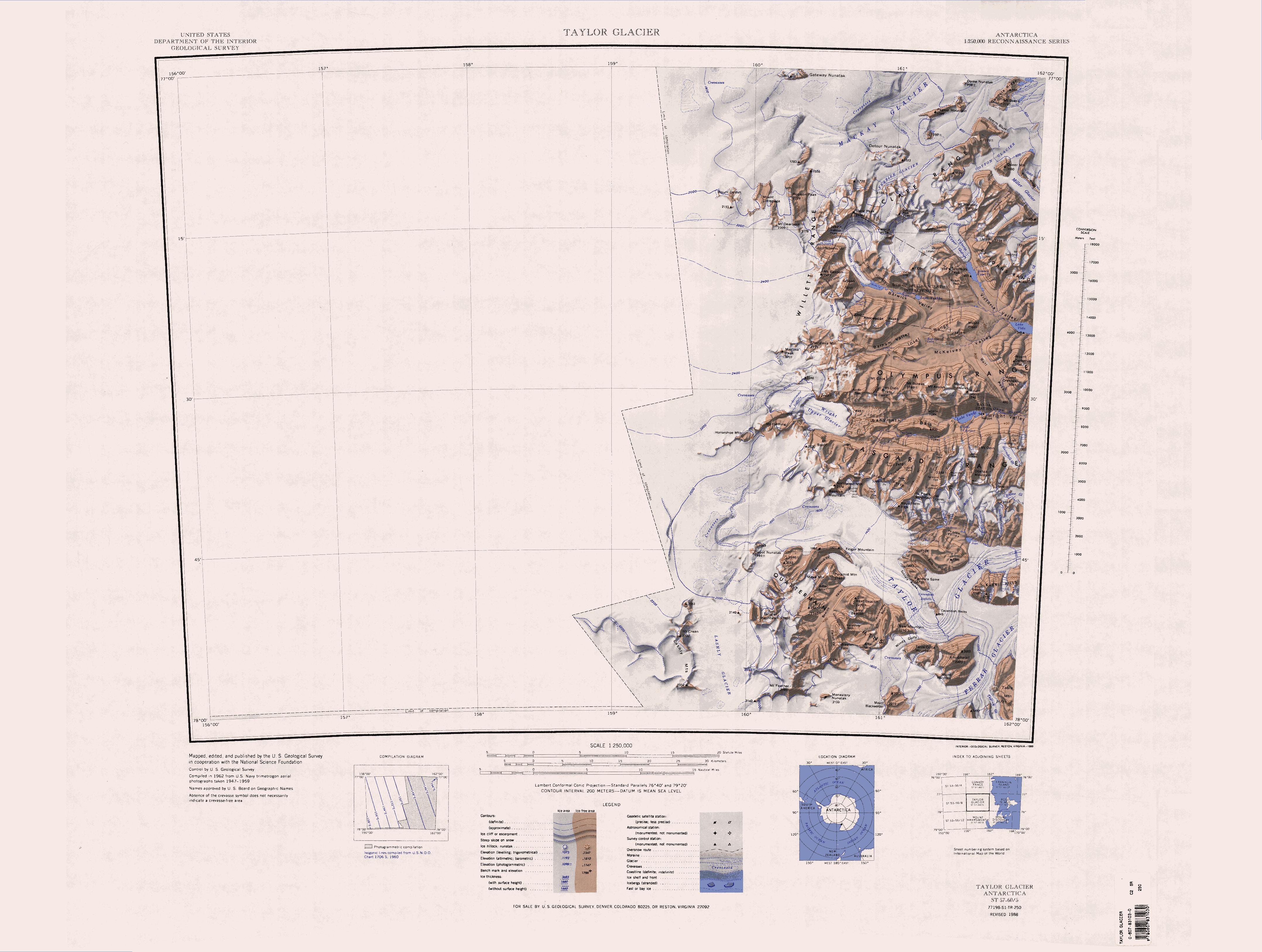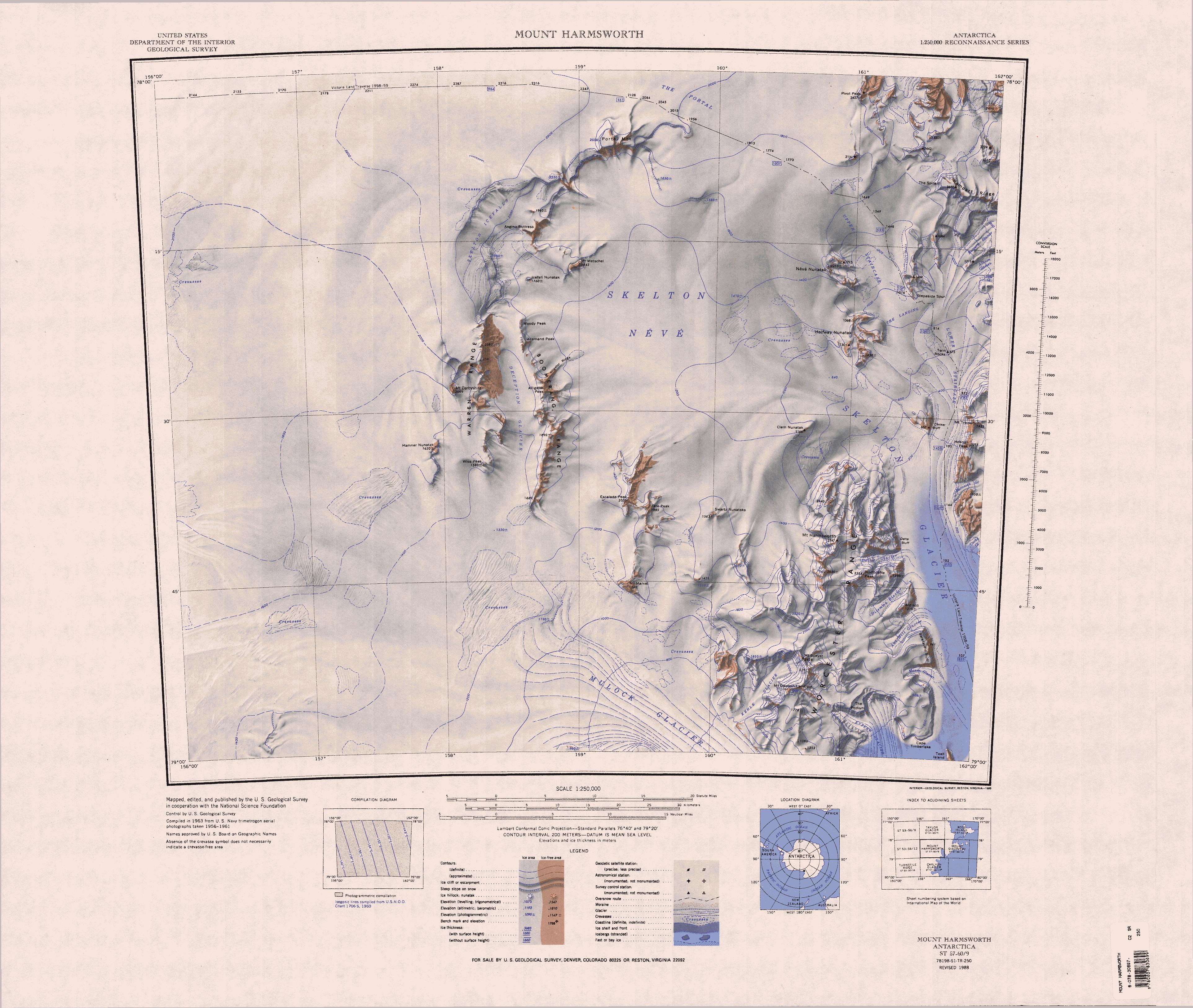Lashly Mountains on:
[Wikipedia]
[Google]
[Amazon]
The Lashly Mountains () are a small group of mountains, the most prominent at being Mount Crean, standing south of the head of

 The Lashly Mountains lie between the
The Lashly Mountains lie between the
File:William Lashly, November 1911.jpg, William Lashly, November 1911
File:Tom Crean2b.JPG, Tom Crean taken aboard the ''Endurance'', 1914
File:Portal_Mountain.jpg, Eastern side of Portal Mountain, looking south towards the Angino Buttress; midnight
Taylor Glacier
__NOTOC__
The Taylor Glacier is an Antarctic glacier about long, flowing from the plateau of Victoria Land into the western end of Taylor Valley, north of the Kukri Hills, south of the Asgard Range. The middle part of the glacier is bounded on ...
and west of Lashly Glacier, in Victoria Land
Victoria Land is a region in eastern Antarctica which fronts the western side of the Ross Sea and the Ross Ice Shelf, extending southward from about 70°30'S to 78°00'S, and westward from the Ross Sea to the edge of the Antarctic Plateau. I ...
, Antarctica.
Exploration and naming
The Lashly Mountains were discovered by theBritish National Antarctic Expedition
The ''Discovery'' Expedition of 1901–1904, known officially as the British National Antarctic Expedition, was the first official British exploration of the Antarctic regions since the voyage of James Clark Ross sixty years earlier (1839–18 ...
(1901–04) and named for William Lashly
William Lashly (25 December 1867 – 12 June 1940) was a Royal Navy seaman who served as lead stoker on both the ''Discovery'' expedition and the ''Terra Nova'' expedition to Antarctica, for which he was awarded the Polar Medal. Lashly wa ...
, a member of the party which explored this area.
Location
The Lashley Mountains are on the edge of the East Antarctic Ice Sheet. They are west of theQuartermain Mountains
The Quartermain Mountains are a group of exposed mountains in Antarctica, about long, typical of ice-free features of the McMurdo Dry Valleys, Victoria Land, located south of Taylor Glacier and bounded by Finger Mountain, Mount Handsley, Mou ...
and Mount Feather
The Quartermain Mountains are a group of exposed mountains in Antarctica, about long, typical of ice-free features of the McMurdo Dry Valleys, Victoria Land, located south of Taylor Glacier and bounded by Finger Mountain, Mount Handsley, Mount F ...
, from which they are separated by the Lashly Glacier, which flows south into The Portal.
Mount Crean is the highest peak of the range.
Portal Mountain lies to the south of the range, above the Skelton Névé.
Geology

 The Lashly Mountains lie between the
The Lashly Mountains lie between the intrusive rock
Intrusive rock is formed when magma penetrates existing rock, crystallizes, and solidifies underground to form '' intrusions'', such as batholiths, dikes, sills, laccoliths, and volcanic necks.Intrusive RocksIntrusive rocks accessdate: Marc ...
s of the McMurdo Dry Valleys
The McMurdo Dry Valleys are a row of largely snow-free valleys in Antarctica, located within Victoria Land west of McMurdo Sound. The Dry Valleys experience extremely low humidity and surrounding mountains prevent the flow of ice from nearby ...
and the extrusive rock
Extrusive rock refers to the mode of igneous volcanic rock formation in which hot magma from inside the Earth flows out (extrudes) onto the surface as lava or explodes violently into the atmosphere to fall back as pyroclastics or tuff. In contras ...
s of the Transantarctic Mountains
The Transantarctic Mountains (abbreviated TAM) comprise a mountain range of uplifted (primarily sedimentary) rock in Antarctica which extend, with some interruptions, across the continent from Cape Adare in northern Victoria Land to Coats Land. ...
.
Samples from an unnamed nunatak north of Mount Crean indicated an extrusive origin.
The Lashly Formation is the youngest in the Victoria Group
Victoria Group ( sr-cyr, Викторија Група) is a Serbian holding company with the headquarters in Belgrade, Serbia. It is a majority owner by Netherlands-based ADM Europe. Victoria Group has a total of 15 companies within its holdi ...
of the Beacon Supergroup
The Beacon Supergroup is a geological formation exposed in Antarctica and deposited from the Devonian to the Triassic (). The unit was originally described as either a formation or sandstone, and upgraded to group and supergroup as time passed. It ...
.
It is a sandstone and siltstone sequence containing plant remains that overlies the Feather conglomerate.
It appears to conform with the underlying conglomerate in areas, with local areas of disconformity.
The Aztec Siltstone appears to have been deposited on a flat alluvial plain that held streams, swamps, lakes and low emergent areas.
There are plant fossils of ''Dicroidium
''Dicroidium'' is an extinct genus of fork-leaved seed ferns that were widely distributed over Gondwana during the Triassic (). Their fossils are known from South Africa, the Arabian Peninsula, Australia, New Zealand, South America, Madagascar, t ...
'' flora in much of the Lashley formation, dating from the early to late Triassic
The Triassic ( ) is a geologic period and system which spans 50.6 million years from the end of the Permian Period 251.902 million years ago (Mya), to the beginning of the Jurassic Period 201.36 Mya. The Triassic is the first and shortest period ...
.
Phytolith
Phytoliths (from Greek, "plant stone") are rigid, microscopic structures made of silica, found in some plant tissues and persisting after the decay of the plant. These plants take up silica from the soil, whereupon it is deposited within different ...
s, silica plant microfossils, have been found in four samples collected from the east side of a ridge that extends southeast from Mount Crean.
The phytoliths in the two Aztec Siltstone samples were probably from ''Archaeopteris
''Archaeopteris'' is an extinct genus of progymnosperm tree with fern-like leaves. A useful index fossil, this tree is found in strata dating from the Upper Devonian to Lower Carboniferous (), the oldest fossils being 385 million years old, a ...
''.
''Conchostracans
Clam shrimp are a group of bivalved branchiopod crustaceans that resemble the unrelated bivalved molluscs. They are extant and also known from the fossil record, from at least the Devonian period and perhaps before. They were originally classifi ...
'' have been found together with fish remains in lake beds at Portal Mountain and in the Lashly Mountains.
Features
Mount Crean
. Massive, rocky mountain, high, forming the central and highest summit of the Lashly Mountains. Named by theNew Zealand Antarctic Place-Names Committee New Zealand Antarctic Place-Names Committee (NZ-APC) is an adjudicating committee established to authorize the naming of features in the Ross Dependency on the Antarctic continent. It is composed of the members of the New Zealand Geographic Board ...
(NZ-APC) for Petty Officer Thomas Crean
Major Dr. Thomas Joseph Crean, (19 April 1873 – 25 March 1923) was an Irish rugby union player, British Army soldier and doctor. During the Second Boer War, while serving with the Imperial Light Horse, he was awarded the Victoria Cross. In ...
, Royal Navy, companion of Lashly with Scott's British National Antarctic Expedition
The ''Discovery'' Expedition of 1901–1904, known officially as the British National Antarctic Expedition, was the first official British exploration of the Antarctic regions since the voyage of James Clark Ross sixty years earlier (1839–18 ...
(BrNAE) of 1901-04, and British Antarctic Expedition, 1910–13
The ''Terra Nova'' Expedition, officially the British Antarctic Expedition, was an expedition to Antarctica which took place between 1910 and 1913. Led by Captain Robert Falcon Scott, the expedition had various scientific and geographical objec ...
.
Lashly Glacier
. Short, broad glacier lying between the Lashly Mountains on the west andTabular Mountain
The Quartermain Mountains are a group of exposed mountains in Antarctica, about long, typical of ice-free features of the McMurdo Dry Valleys, Victoria Land, located south of Taylor Glacier and bounded by Finger Mountain, Mount Handsley, Mou ...
and Mount Feather
The Quartermain Mountains are a group of exposed mountains in Antarctica, about long, typical of ice-free features of the McMurdo Dry Valleys, Victoria Land, located south of Taylor Glacier and bounded by Finger Mountain, Mount Handsley, Mount F ...
on the east, flowing south into The Portal.
So named by the New Zealand Party of the Commonwealth Trans-Antarctic Expedition
The Commonwealth Trans-Antarctic Expedition (CTAE) of 1955–1958 was a Commonwealth-sponsored expedition that successfully completed the first overland crossing of Antarctica, via the South Pole. It was the first expedition to reach the South ...
(CTAE) (1956-58) for its proximity to the Lashly Mountains.
Portal Mountain
. A large mountain, high, with a broad icecapped summit, standing south of the Lashly Mountains, on the south side of the main stream of the Skelton Glacier where it leaves the polar plateau. Discovered by the New Zealand party of the CTAE (1956-58) who named it because of its association with The Portal. Portal Mountain is the southernmost area of the Feather and Lashly geological formation.Gallery
References
Sources
* * * * * * {{Include-USGov , agency=United States Geological Survey Mountain ranges of Victoria Land